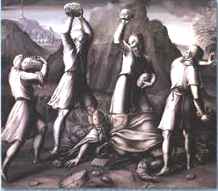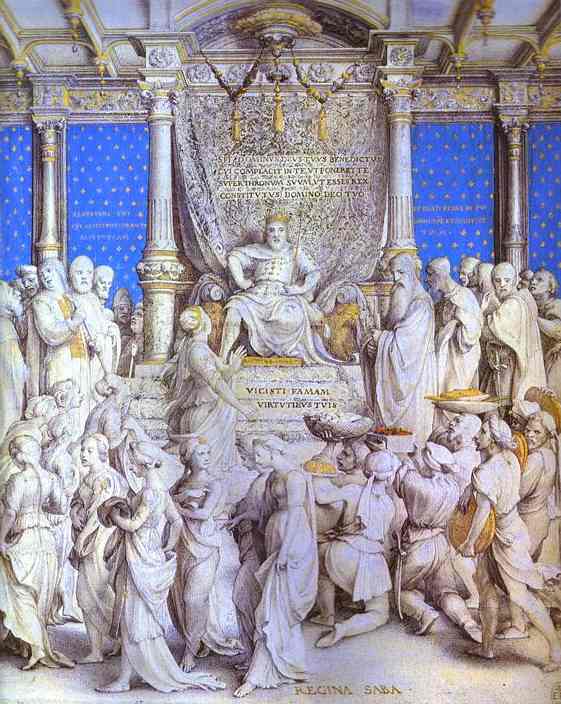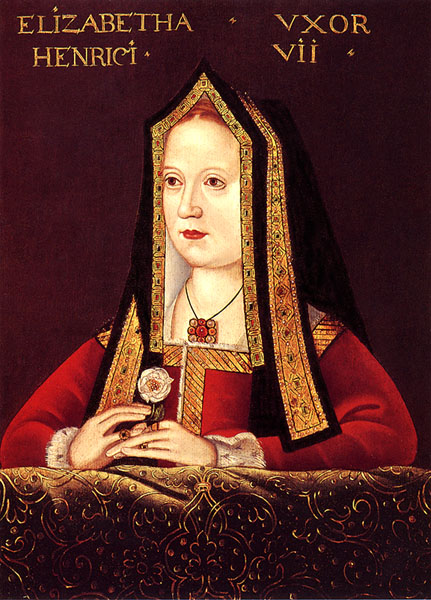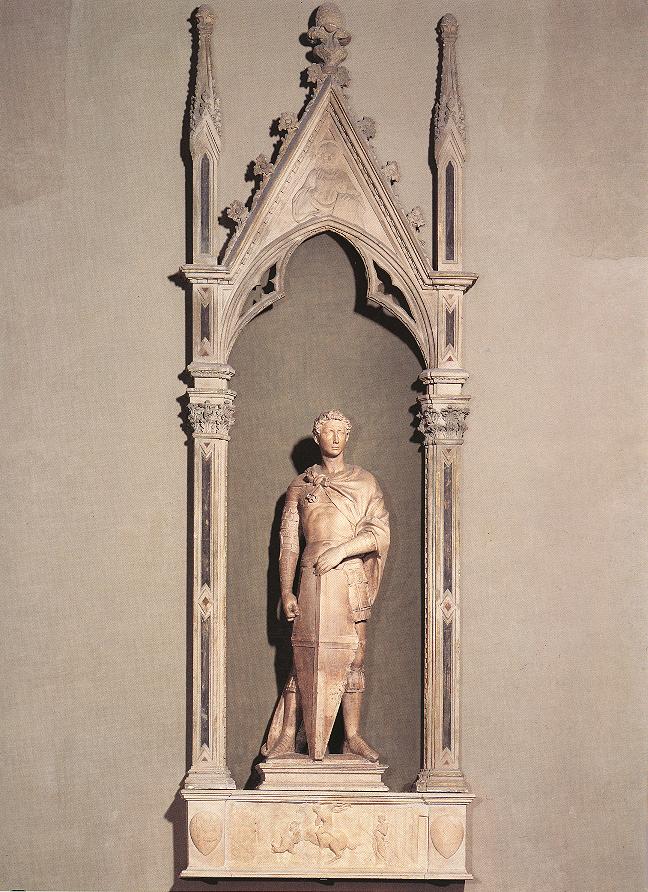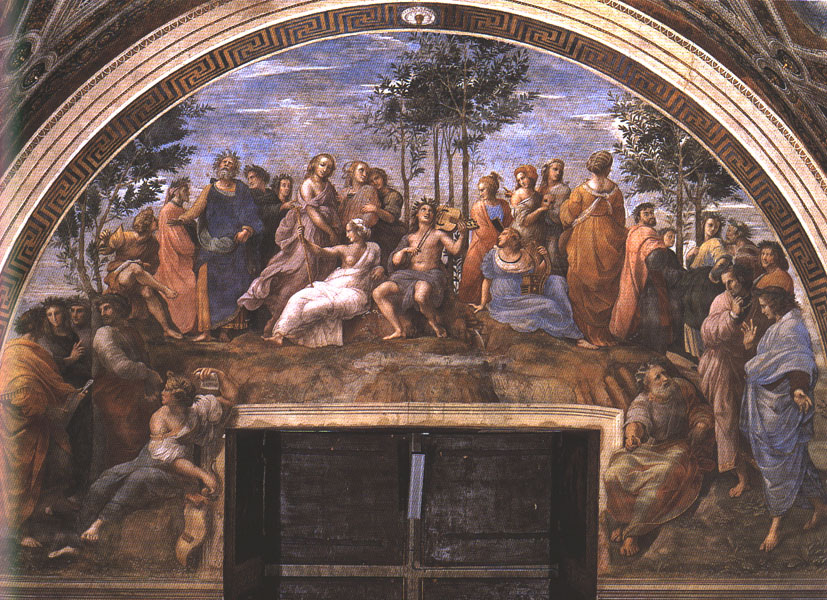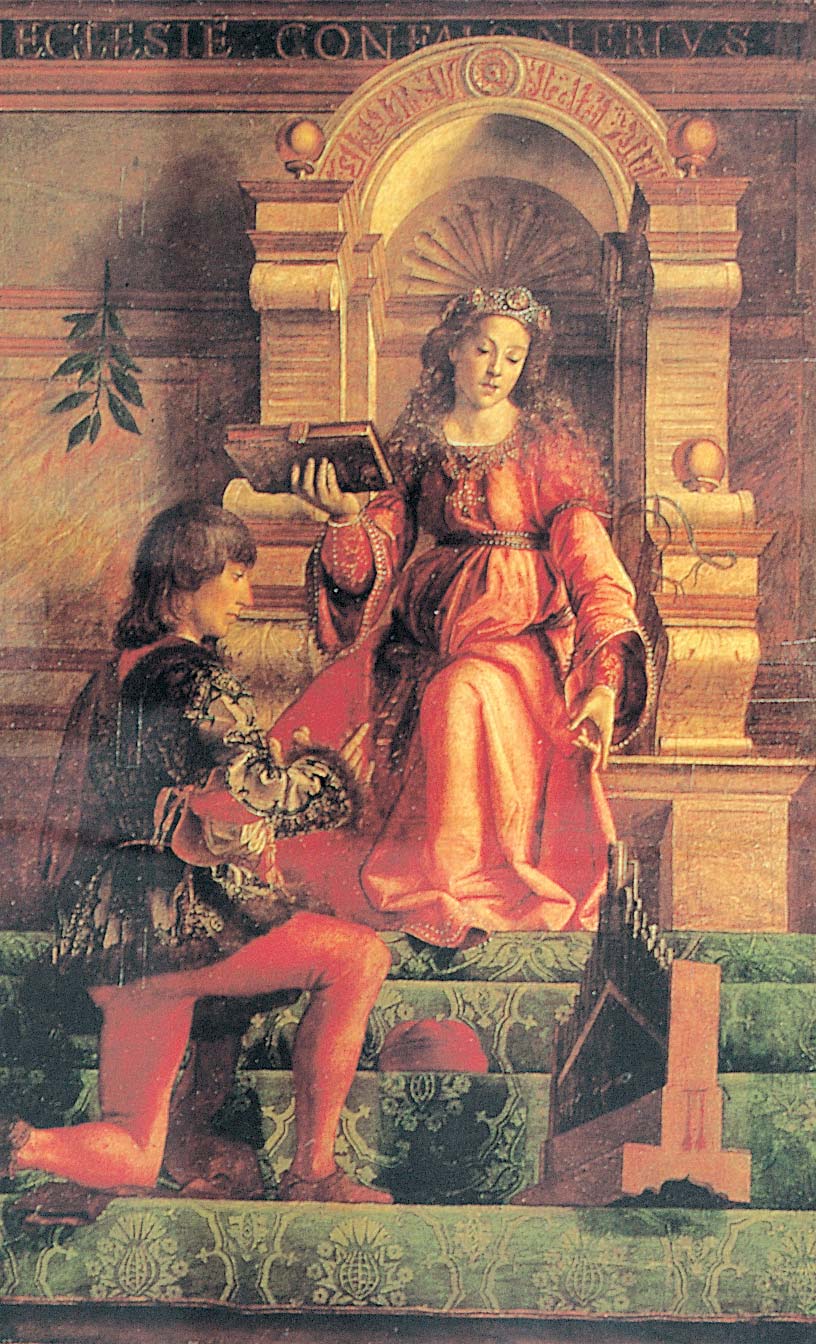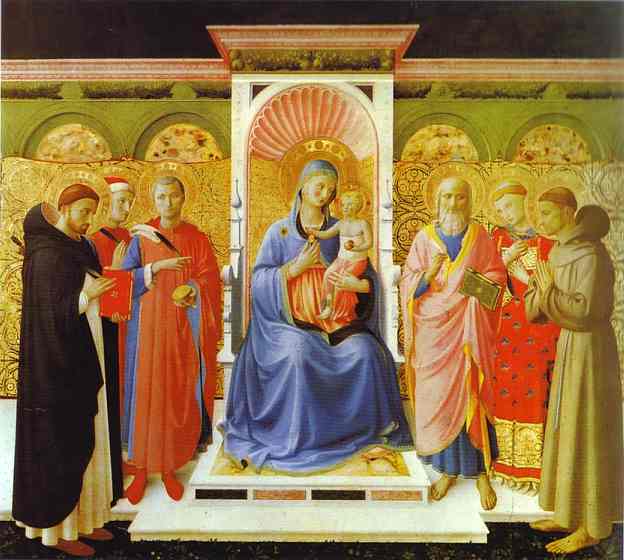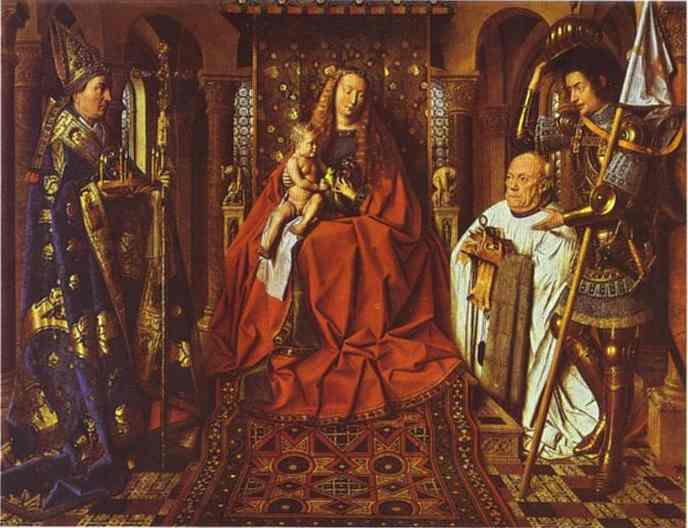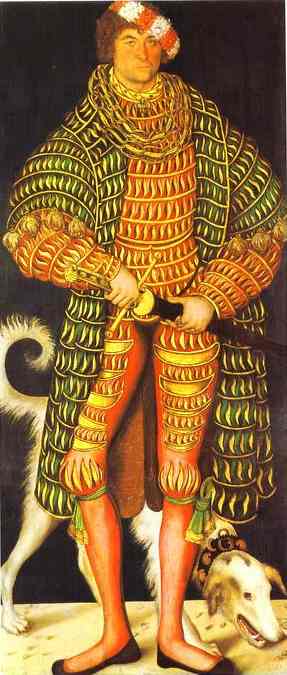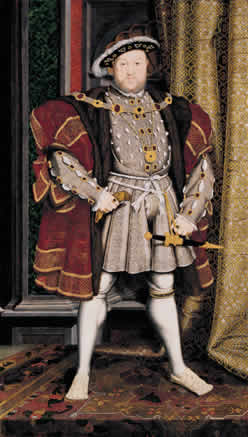At the start of his reign Henry VIII was looking for the support of the church, to demonstrate his power and convey a political message through his patronage of the arts. Later he saw an independent Church of England as a solution to the marriage problem. Note in England it was not the populace clamouring for Protestantism and Henry saw himself as a true Catholic all his life returning the church to its original interpretation of the Bible and removing corruption. The following image was kept in his private quarters.
Girolamo da Treviso, Four Evangelists Stoning the Pope (Royal), c. 1540 It is designed to uphold Henry’s claims through the denigration of the Pope. The Four Evangelists are stoning the Pope as he and previous Popes had corrupted the church and distorted the true Bible. Top left is a gigantic candle, the light of the true Gospel and in front of the Pope is a candle that has gone out. In front of the Pope is also a satchel with four seals hanging out, these are Papal Dispensations or indulgences that were sold to reduce your time in purgatory. The two people under the Pope are marked Avarice and Hypocrisy. We know it was in Henry VIII private gallery as it appears in two inventories of 1542 and 1547. There were other anti-Papal pictures which do not survive, for example one was called the Pope with two monks and as Henry did not like monks we can only guess what they were doing.
Holbein, Solomon and the Queen of Sheba (Royal), c. 1535
This is between a drawing and a cabinet miniature and is generally called a miniature today. The Queen of Sheba was a symbol for the Church and she came to worship Solomon who was a type for Christ and who bears a remarkable similarity to Henry. Solomon build God’s Temple in Jerusalem as Henry was building the Church of England. The inscription talks about Solomon’s divine right to head the church. We don’t know who commissioned it or how it was used. These are also important questions to ask when looking at portraits.
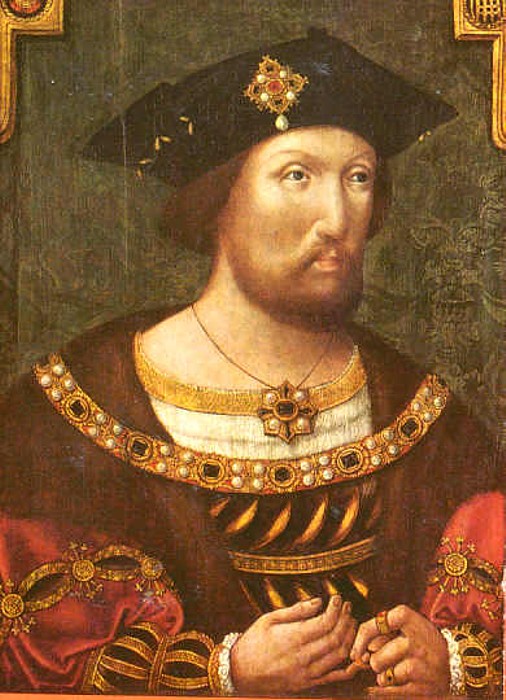
Anon, Henry VIII (NPG), c. 1520
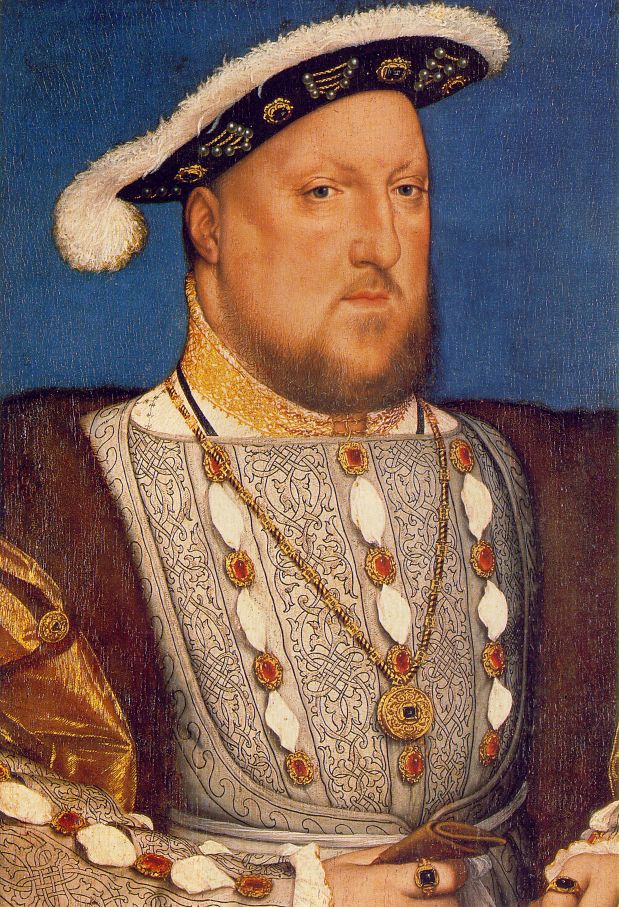
Holbein, Henry VIII (Thyssen-Bornemisza Collection, Madrid), c. 1530s
This is a very significant portrait of Henry. It is the only Holbein to use lapis lazuli for the blue, the other use azurite (hydrated copper carbonate). Azurite turns grey-brown over centuries although some portraits, such as that of Jane Seymour have not turned grey-brown, perhaps because of the thick varnish prevented the moisture-based oxidation. The gold is powdered gold ground with oil. One suggestion is that it was an exchange of gifts with the King of France. Note that images of Henry were not sent out to prospective brides and he even refused to send portraits of his daughter Mary to foreigners, when she was looking for a husband.
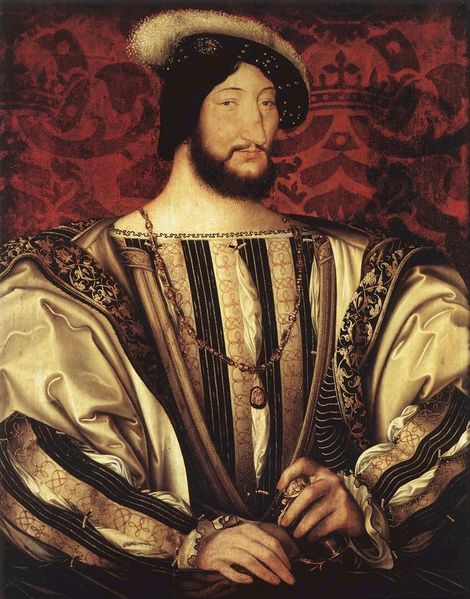
Jean Clouet, François I (Louvre), c. 1520s
Françoise’s portrait follows the standard type and it has many similarities with Henry’s so it is possible Holbein adopted the French portrait type. Three-quarter on, both hands visible and arms that extend beyond the picture space. It is this that gives the picture such a monumental appearance and makes it look larger than it is. Henry’s eye is exactly central. he is holding a leather glove, a standard element, showing off extreme wealth but with no symbolic meaning.
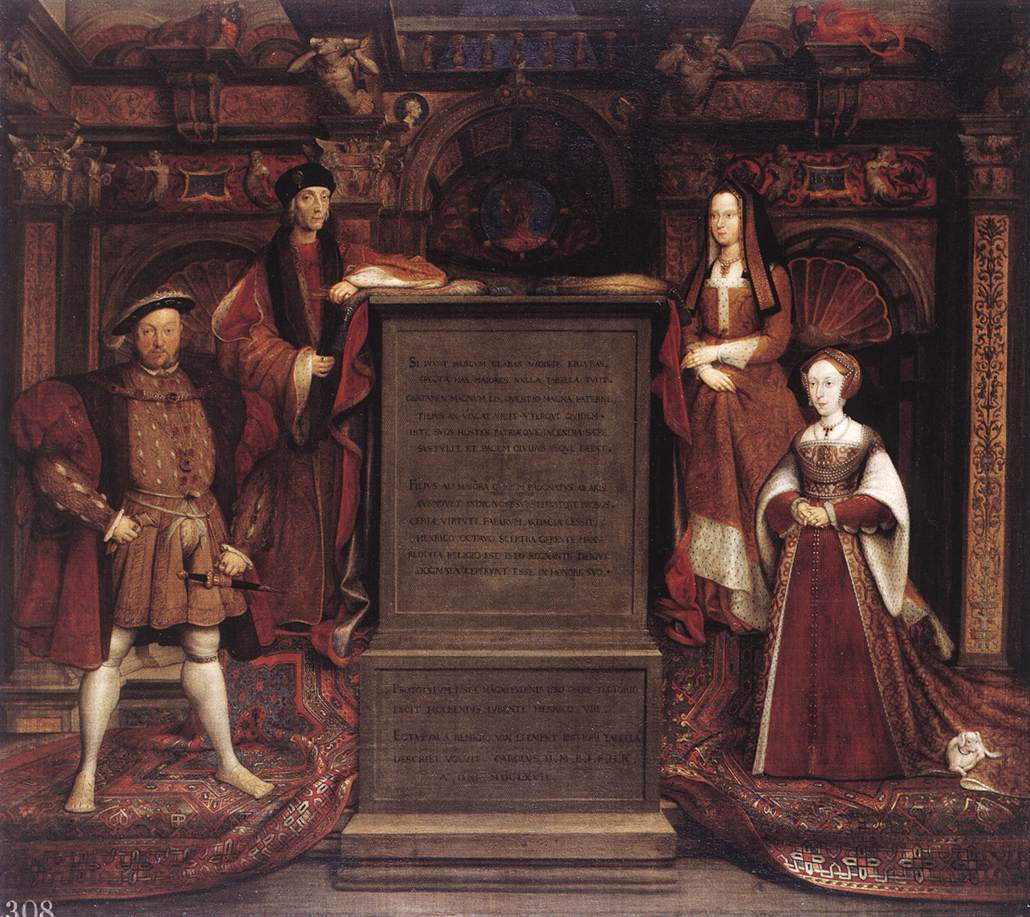
Remiguis von Leemput, copy of Whitehall Mural (Royal), 1667
This was the most important commission for Holbein, a wall painting in Whitehall Place in Henry’s Privy Chamber in 1537. It was destroyed in 1698 when the Palace burned down. This is a copy by Remiguis von Leemput produced on the orders of Charles II in 1667.
Simon Thurley has shown that the room that was the Privy Chamber in the 17th century when it was recorded was also the Privy Chamber in Henry’s time so we now know it was in Henry’s Privy Chamber. The Privy Chamber came after the formal Presentation Chamber and Henry would invite some ambassadors to dine with him in the Privy Chamber.
We don’t know if Holbein made multiple copies. Lucas Cranach the Elder did churn out copies of the Dukes of Saxony. We know little of what Holbein did except the paintings of Henry’s potential brides around Europe and this mural, the two most politically sensitive artistic commissions, so we know he trusted Holbein. Henry VII and Elizabeth of York were both long dead but we do not now if Jane Seymour died before or after the mural was painted. If before why was it painted because she may have had a daughter, not a cause of celebration (Anne Boleyn was executed partly because she had born him a daughter, Elizabeth). If after why is Edward VI not shown? New research (after Roy Strong) indicates it was an accurate copy.
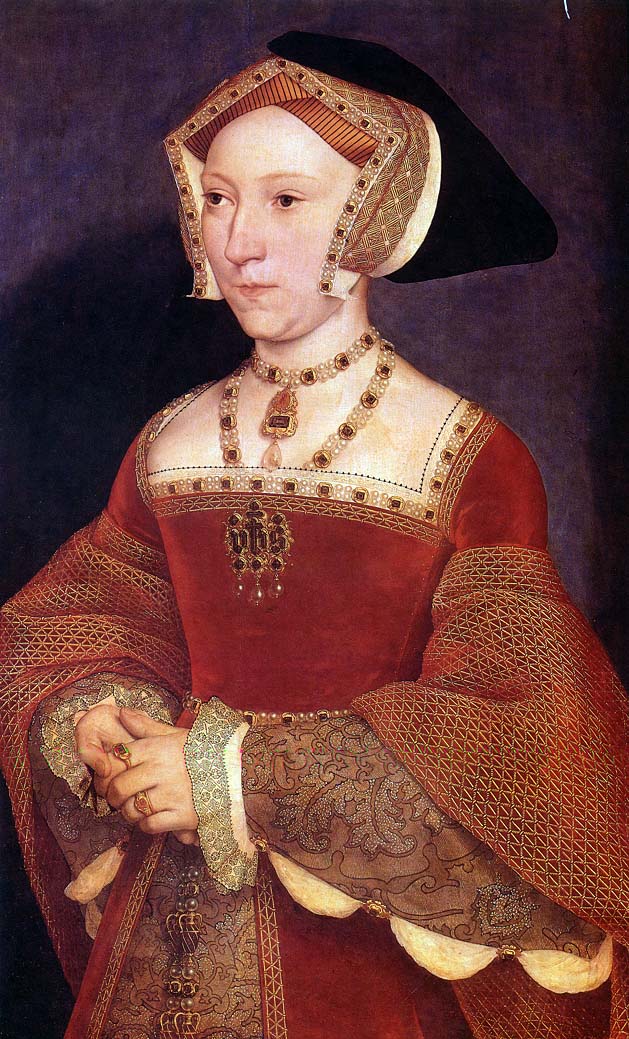
Holbein, Jan Seymour (Vienna), c. 1536
This blue is azurite but is still blue perhaps protected by thick varnish.
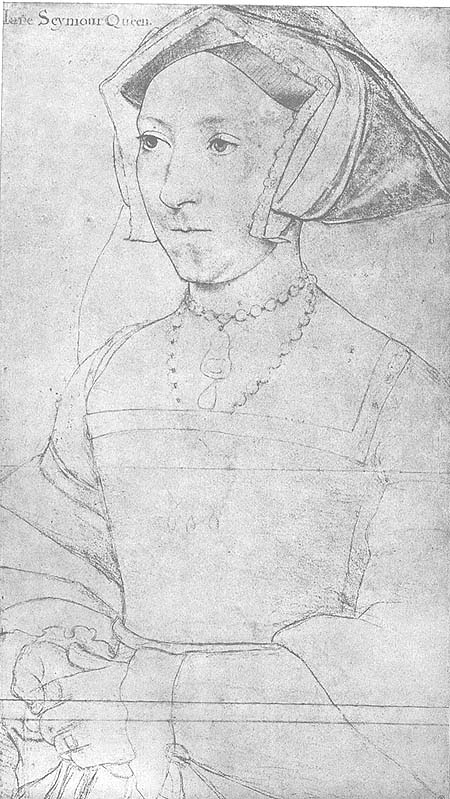
Holbein, Jane Seymour (Royal), c. 1536
Holbein probably copied Elizabeth from one of the many portraits such as this one in the National Portrait Gallery.
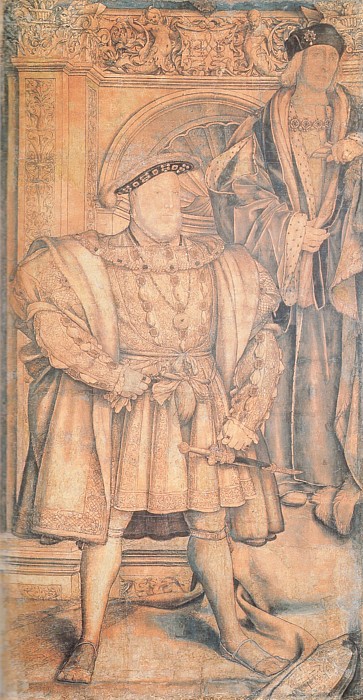
Holbein, Cartoon for Whitehall Mural (NPG), c. 1537
The mural is slightly larger than life-size. This cartoon for the mural is pricked indicating it was copied onto another piece of paper used to create the image on the wall by pouncing. The Thyssen-Bornemisza portrait looks like the cartoon but the Leemput painting shows him looking straight out.
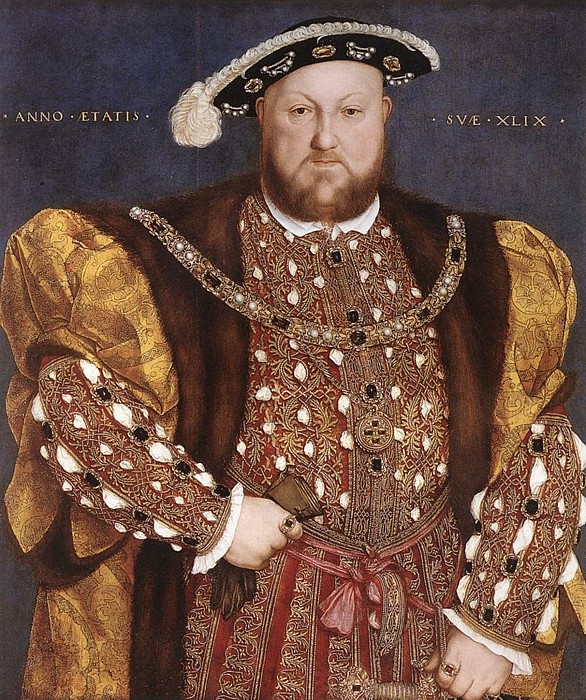
After Holbein, Henry VIII (Galleria Nazionale d’Arte Antica, Rome)
The Rome portrait of Henry also looks out. In all known copies of the mural he looks out. A comment in the 17th century says that people felt abashed and annihilated in the presence of this mural.
In the 16th century it was the height of bad manners according to so called courtesy books (such as Baldassare Castiglione’s The Book of the Courtier (Il Cortegiano)). These books said never stand with your legs apart but there are precedents:
Donatello, St. George (Florence), c. 1417 with legs apart 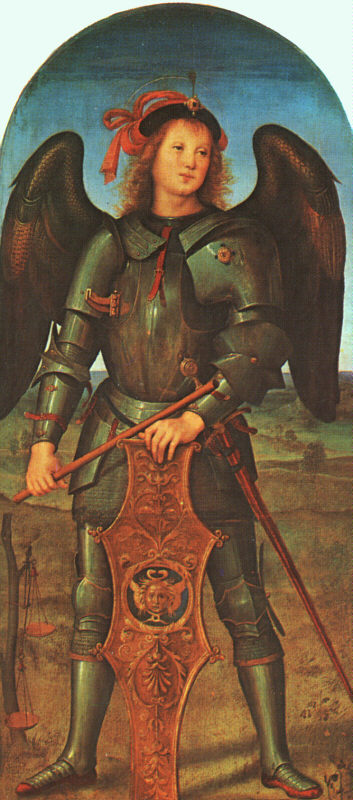
Perugino, St. Michael (NG), c. 1496-1500 with legs apart
Perhaps Henry thought he was above such things or perhaps he was showing off his ability to continue the dynasty, the codpiece. He was also very proud of his legs and a comparison with his armour shows Holbein exaggerated the length of his legs.
Henry was also most proud of his reform of the church as is indicated by the following translation of the Latin inscription on the stone in the centre. Translation of the Latin inscription on Holbein s Whitehall Mural of 1537:
If it pleases you to see the illustrious images of heroes, look on these: no picture ever bore greater. The great debate, competition and great question is whether father or son is the victor. For both indeed were supreme. The former often overcame his enemies and the conflagrations of his country, and finally brought peace to its citizens. The son, born indeed for greater things, removed the unworthy from their altars and replaced them by upright men. The arrogance of the popes has yielded to unerring virtue, and while Henry VIII holds the sceptre in his hand religion is restored and during his reign the doctrines of God have begun to be held in his honour.
Raphael, Parnassus (Vatican), 1510-11
Justus of Ghent, Music (NG), c. 1470s
After Bramante, Ancient Temple (engraving), 1481
Fra Angelico, Annalena Altarpiece (San Marco), c. 1437-40
Jan van Eyck, Virgin with Canon van der Paele (Bruges), c. 1430
Lucas Cranach the Elder, Portrait of Henry the Devout of Saxony, 1514
Lucas Cranach, Duke and Duchess of Saxony (Dresden), 1514 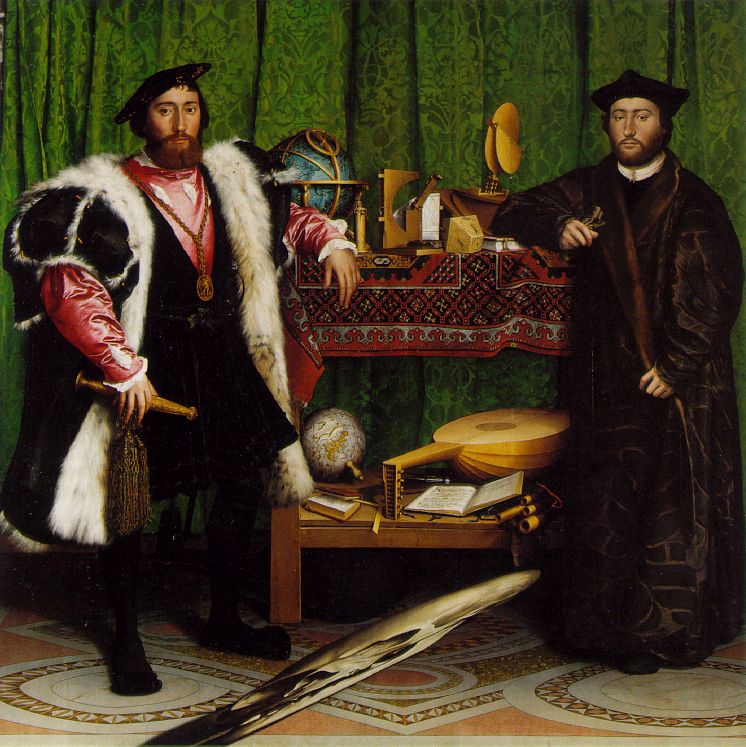
Holbein, The Ambassadors (NG), 1533
After Holbein, Henry VII (Walker Art Gallery)
Stained Glass Window (Church of St. Nicholas, Stratford-upon-Avon)

